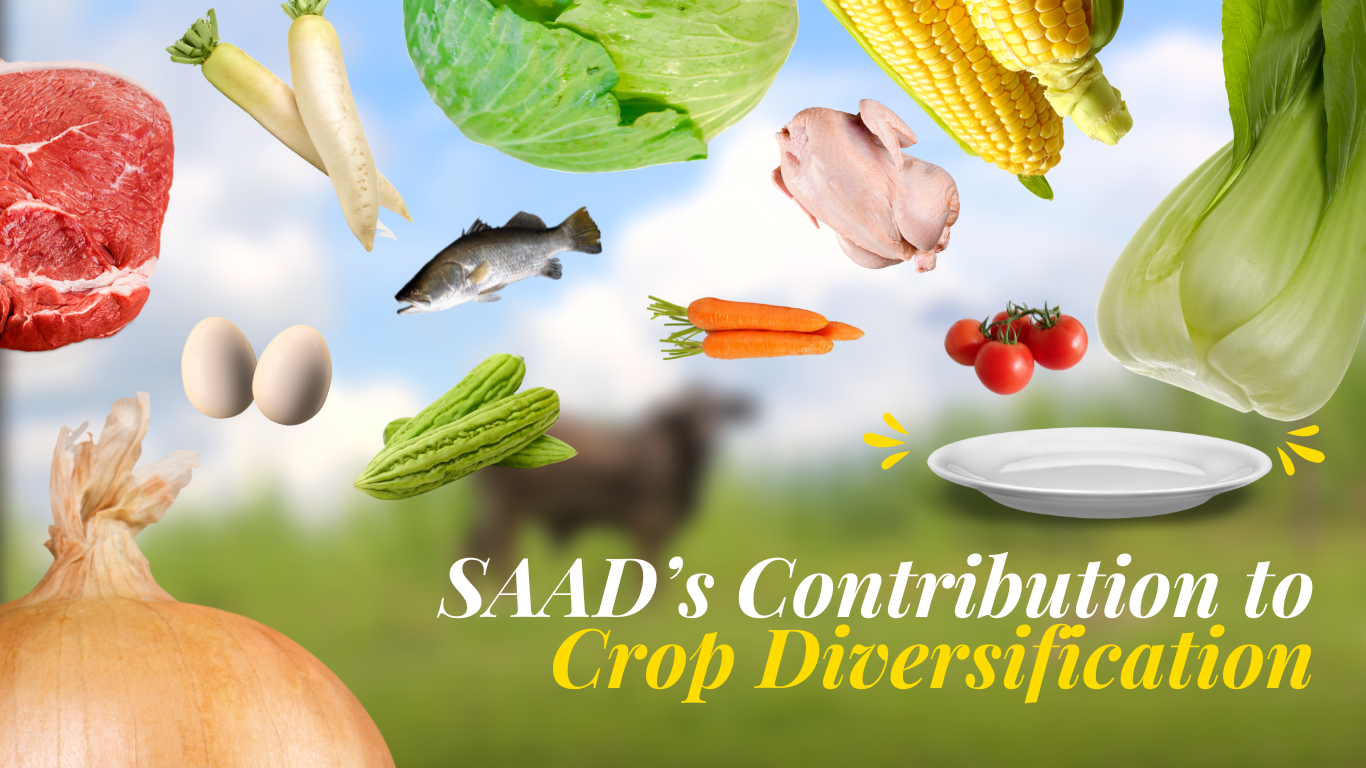QUEZON CITY, June 2, 2023 – Crop diversification not only brings farmers an additional source of income but also provides a variety of food sources for the community, increases productivity while being adaptive to environmental challenges, as well as being responsive to environmental conservation.
National situation of crop diversification
It is an undisputed fact that the Philippine economy is largely dependent on agriculture. In the Philippine Statistics Authority (PSA) data the sector holds 22.9% of employment status in the country as of 2020. This 22.9% tantamounts to 9.70 million workers in the country.
Further, according to the PSA Census of Agriculture and Fisheries 2020 data, there are about 13.42 million hectares (ha) total of land area used for agricultural crop cultivation in the country, and roughly 55% of it is used for growing temporary crops (rice, corn, root crops, high-value, pineapple, sugarcane, etc.) while 41% is used for permanent crops such as (e.g., coconut, mango, abaca, coffee, etc.).
As the primary government agency mandated for the promotion of agricultural development by providing the policy framework, public investments, and support services needed for domestic and export-oriented business enterprises, the Department of Agriculture (DA) is the main vehicle for employing various mechanisms in the advancement of agricultural production, regulation, and research and development (R&D).
SAAD’s endeavors in diversification
When the Department of Agriculture – Special Area for Agricultural Development (DA-SAAD) capped its Phase 1 implementation, it brought a total of 3,602 projects to its 11 covered regions across the country from 2017 to 2022. The 3,602 livelihood projects implemented are mostly in packages, such as a combination of two or more commodities given in a complementing and integrated approach.
The 3,602 projects, if deconstructed, account for 14,416 commodities, and these figures are equivalent to 2,310 rice projects, 1,366 corn projects, 2,319 HVC projects, 4,831 livestock and poultry projects, and 3,590 fisheries projects.
The SAAD program is an initiative aimed at promoting agricultural development in marginalized as well as conflict-affected areas of the country. The program focuses on enhancing food security, improving the livelihoods of smallholder farmers, and helping reduce poverty in its covered regions, hence must also implement projects by this virtue.
Therefore, determining and crafting projects must involve calculation of sustained income-generating livelihood to provide beneficiaries with multiple sources of profit.
Crop diversification is one of the mechanisms the program employs. The program provides two (2) or more crops with a varying time frame of yield. One is typically considered as a main crop like rice, coconut, abaca, corn, fruit trees, etc.
The main crops are usually incorporated with short-term yielding crops or cash crops like vegetables (pavito, bell pepper, peanuts, onions, beets, carrots, radishes, sweet potatoes, turnips, etc.)
The cropping arrangement varies depending on the farmland availability and the crops’ ideal season. Crops considered secondary are alternately sowed post-harvest of the main crop, like in the case of Samahan ng Magsasakang Katutubo ng Monteclaro (SMKM), an Indigenous People’s (IP) group beneficiary in Occidental Mindoro who received agricultural inputs under Organic Rice Production through Farming Enterprise FY 2022.
SMKM’s main crop is upland rice, while their secondary is leguminous crops like mungbean and peanut. The FA alternately plants the main and secondary crops.
Further, leguminous crops are known for having nitrogen-fixing properties for the soil not only providing an additional income source for the FA but also aids the soil condition.
Another FA in the province of Occidental Mindoro adapts a similar arrangement but with rice and cassava crops. This is the Mal-Anggatan Tanuman Orayan sa Mamangan FA, an Indigenous group FA from Abra de Ilog. The FA received a lowland rice production from the program incorporated with cassava production. The FA was also provided post-harvest equipment and facility as well as training in how to operate and adequately take care of the equipment.
Moreover, aside from the mentioned benefits of crop diversification from an additional income source to improving the farm topographical factors, the mechanism also diversifies the food source in the community.
Livestock, poultry, and crops
In diversification, SAAD also provides either livestock or poultry with crops, like in the case of the Cabugo Chicken Production Association (CACPA) in Bayabas, Surigao del Sur. CAPCA was a recipient of abaca production and native chicken production projects. Poultry production was the first site of such in their barangay in Cabugo, paving poultry produce access not only for the FA members but also to their community.
Similar case with Hugpong sa mga Makugihon nga Magbabaol sa Cang-asa in Siquijor, Central Visayas where they were provided corn, HVC, and swine production projects. The group, composed of 50 members, also engaged in value-adding their post-harvest produce, especially corn, and peanut. The farmers were able to produce peanut butter and roasted corn as alternative coffee. Not only did the intervention provide diverse food sources but also a flavorful one.
The large-ruminant incorporated with crops is also an often observed pattern of diversified livelihood projects.
SAAD’s direction
The mentioned strides of SAAD in diversification underscored various possibilities but uplifting the lives of the farmers in the most unreachable rural areas remains the primary motivation, hence must be upheld whatever possible mechanisms the program adapts to innovate and improve the crafting of projects for its beneficiaries.###
Writer: Allanes Bagoso, DA-SAAD NPMO Information Officer
Source: Engr. Jonalyn Racelis, DA-SAAD NPMO Associate Project Officer


Comments (0)